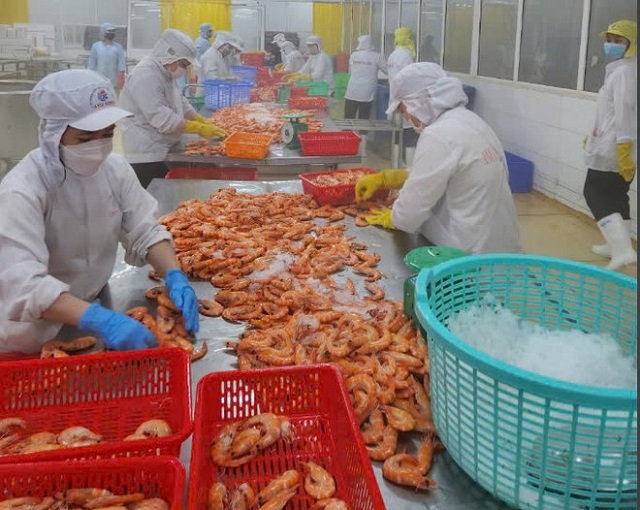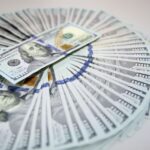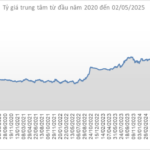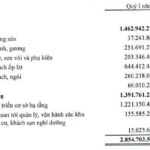
|
The State Bank of Vietnam will closely monitor exchange rate developments, even on a daily basis, to proactively regulate the market. (Photo: Vietnam+)
|
In recent days, Vietnam’s foreign exchange market has witnessed a “hot” period as the USD/VND exchange rate continuously set new record highs. The peak occurred on April 25, when commercial banks listed the USD buying rate at 25,805 VND per USD and the selling rate at 26,195 VND per USD, an increase of 235 VND compared to two weeks earlier. This is an all-time high.
Notably, while the USD strengthened in Vietnam, the US Dollar Index (USD Index – DXY) weakened, falling to 98.975 points, the lowest since 2022, reflecting negative market sentiment.
Concerns Over Tariff Hikes
Experts attribute the recent exchange rate fluctuations to the new tariff policies of the US under President Donald Trump, particularly the proposed 46% retaliatory tax on Vietnamese goods. These policies have created concerns about capital flows and trade balances, leading to increased demand for USD and putting upward pressure on the exchange rate.
Vietnam’s economy relies heavily on imports of raw materials, machinery, and equipment, mostly paid for in USD. With geopolitical tensions persisting, international logistics and transportation costs have surged, prompting businesses to buy more USD to meet their import needs, which further drives up the exchange rate.
Mr. Pham Van Vinh, Director of Tax and Customs Advisory Services at PwC Vietnam, stated that businesses are highly anticipating and relying on the government’s negotiation efforts.
Mr. Vinh raised questions about the possible scenarios after the 90-day deadline on July 9. What are the possible outcomes of the negotiations? How much could the tariffs be adjusted? These are critical concerns for exporting enterprises, especially with the high economic growth target set for this year.
Mr. Bill Nguyen, Business Development Director of Cainver Company (specializing in wood exports), shared that many exporting businesses are facing challenges. They are not only responsible for providing jobs for thousands of workers but are also concerned about the rising USD/VND exchange rate and the potential 46% retaliatory tax on exports to the US.

|
Many businesses worry about the rising exchange rate. (Photo: Vietnam+)
|
“After weathering the COVID-19 storm, businesses are in the recovery phase, but this new tariff threat has caused significant worry. Some major buyers are negotiating to reduce order prices, change payment methods, and require letters of credit with longer terms of 90-120 days. However, not all businesses have the necessary negotiation skills. Several foreign banks have approached us to offer services to mitigate risks,” shared Mr. Bill Nguyen.
How Does the Rising USD Affect Import-Export Enterprises?
Theoretically, a weaker VND should benefit exporters more than importers. However, some businesses disagree, arguing that many exporters also import a significant amount of raw materials and components.
The appreciation of the USD/VND exchange rate has had mixed effects on import-export enterprises. For exporters, especially in sectors such as textiles, seafood, and furniture, the weaker VND enhances their price competitiveness in the international market. Some large exporters reported better orders in March and early April due to the favorable exchange rate.
Mr. Le Quoc Phuong, former Deputy Director of the Center for Industrial and Trade Information, noted: “Processed industrial goods account for nearly 90% of exports, but most of the components and raw materials are still imported. When the USD rises, the cost of importing materials also increases, reducing competitive advantages.”
Mr. Nguyen Quoc Anh, Chairman of the Ho Chi Minh City Rubber and Plastic Association, shared his perspective: “Import prices rise due to the exchange rate, while domestic consumption has not fully recovered. If businesses are not careful in adjusting their pricing strategies, they may find themselves in a difficult position.”

|
The banking industry is committed to meeting all legitimate foreign currency demands of import-export enterprises. (Photo: Vietnam+)
|
Additionally, major export markets like the US and EU are facing inflation and reduced consumer spending, leading to a decline in orders. Some textile businesses reported a 30-40% drop in orders as consumers tightened their spending.
On the other hand, import businesses face increased pressure due to higher input costs. Industries heavily reliant on imported raw materials, such as electronics, pharmaceuticals, and machinery, are confronted with the challenge of either passing on the increased costs to customers or accepting lower profit margins.
In response to the rising exchange rate, the State Bank of Vietnam has intervened to stabilize the market, assuring that it will continue to manage the exchange rate flexibly and stand ready to sell foreign currency when necessary.
Some experts suggest that if the exchange rate pressure persists, the State Bank may intensify its intervention by increasing foreign currency sales or raising the USD reserve ratio at commercial banks to curb speculative demand.
However, the general assessment is that the USD/VND exchange rate in 2025 will continue to face upward pressure but will be tightly managed to avoid macroeconomic instability.
According to Mr. Nguyen Duc Lenh, Deputy Director of the State Bank’s Branch No. 2, maintaining macroeconomic stability, exchange rate stability, and low-interest rates to support economic growth has been a key priority for the State Bank. When the US dollar strengthens and other currencies weaken, adjusting the USD/VND exchange rate within a reasonable range, in harmony with interest rates and economic growth targets, is crucial.
“In the first four months of the year, gold prices fluctuated significantly, but the foreign exchange market remained stable, and inflation was kept under control. Especially for import-export enterprises, the banking industry is committed to meeting all legitimate foreign currency demands,” assured Mr. Nguyen Duc Lenh.
Mr. Nguyen Tri Hieu, a finance and banking expert, shared his perspective: “In 2025, the USD/VND exchange rate will be influenced by both international factors, such as the strength of the US dollar, and domestic factors, such as import demand. The government needs to manage the exchange rate flexibly while increasing foreign reserves to intervene timely when necessary.”
Thuy Ha – May 2, 2025
The Fed’s Rate Cut: A Catalyst for Vietnam’s Monetary Policy Shift?
If the Fed cuts interest rates two to three times this year, the State Bank could reduce its operating interest rates by 25 basis points in Q3 2025 to stimulate credit growth and support the GDP growth target.
The Power of Persuasive Writing: Crafting a Compelling Headline
Unveiling the Secrets of a Profitable Quarter: VGC’s Impressive 56% Growth
Thanks to its robust land leasing segment and strong infrastructure development, Viglacera reported impressive earnings for the first quarter of 2025, with a profit of nearly VND 321 billion, a 56% increase compared to the same period last year. The company has successfully achieved 24% of its annual profit target.
The Greenback’s Allure: Why Many are Hoarding USD
Today (April 10th), the USD exchange rate on the black market soared past 26,200 VND per USD. This surge has prompted a rush among individuals to stockpile USD, anticipating further significant increases in value by the year’s end.





















